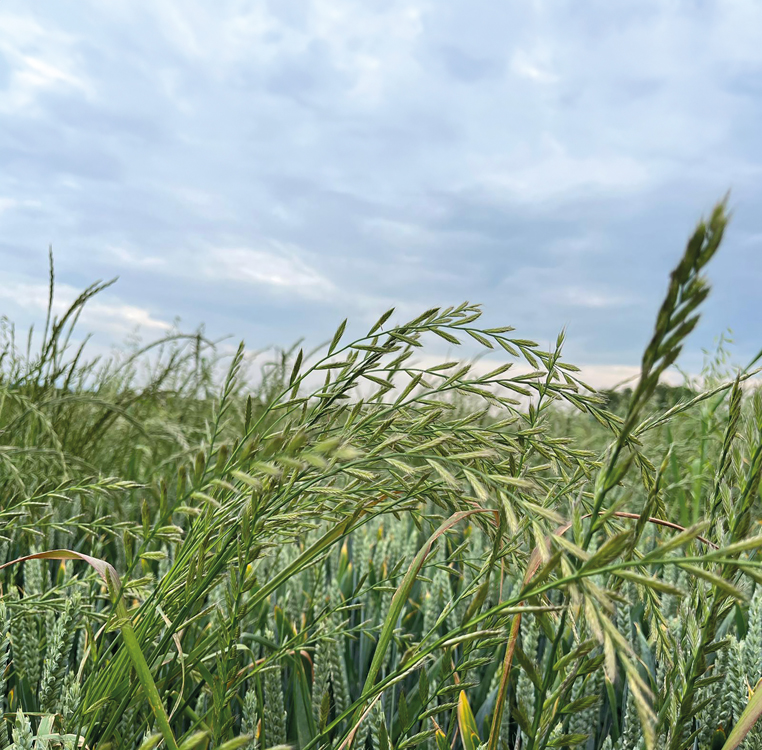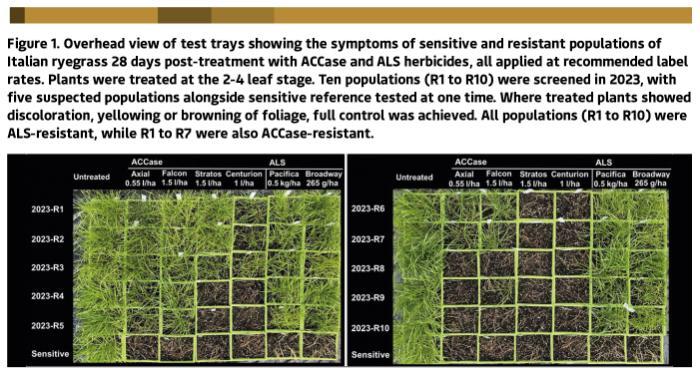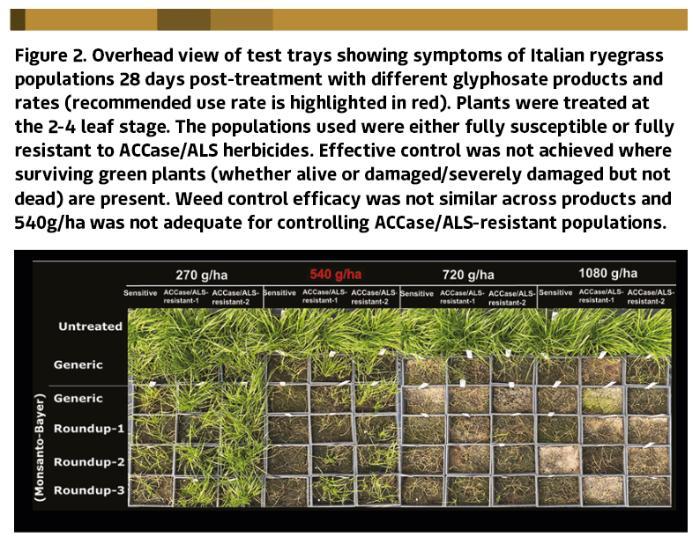27 May 2024
A growing threat
Agronomy practices have become increasingly reliant on herbicides. However, research at
Oak Park shows that other tactics will be needed against the spread of herbicide-resistant weeds.
 Ireland’s mild climate, coupled with more winter cropping, earlier autumn-sowing and increased adoption of non-inversion tillage, has resulted in greater weed challenges and total reliance on herbicides for weed control. A declining armoury of herbicides and the increased use of post-emergence selective ACCase/ALS-inhibiting herbicides have led to an increase in potentially devastating grass-weed species and evolving resistance-risks.
Ireland’s mild climate, coupled with more winter cropping, earlier autumn-sowing and increased adoption of non-inversion tillage, has resulted in greater weed challenges and total reliance on herbicides for weed control. A declining armoury of herbicides and the increased use of post-emergence selective ACCase/ALS-inhibiting herbicides have led to an increase in potentially devastating grass-weed species and evolving resistance-risks.
Italian ryegrass (Lolium multiflorum), although at low levels, is on the increase, and poses a significant weed control challenge on tillage farms, explains Vijaya Bhaskar A.V., a Research Officer in Teagasc’s Crop Science Department.
“This out-crossing weed will quickly develop herbicide resistance and is a prodigious seed producer, allowing huge banks of seed to build up in the soil. To date, Italian ryegrass has evolved resistance to eight different herbicide modes of action, worldwide. Importantly, more than 70% of resistance cases within the UK and Europe are associated with two modes of action: ACCase and ALS herbicides.”
The mechanisms of ACCase/ALS resistance are target-site resistance (TSR) due to mutations in the target genes, and non-target-site resistance (NTSR) such as enhanced metabolism, which detoxifies the herbicide.
Monitoring and testing
To assess the scope of the problem, a total of 36 Italian ryegrass populations, suspected of herbicide resistance, were tested through the Teagasc weed resistance monitoring programme between 2020 and 2023, says Vijaya. “These populations were grown in a glasshouse and tested (2-4 leaf growth stage) with ACCase, ALS, and glyphosate herbicides at recommended label rates to determine their sensitivity status. Resistance was confirmed by further dose-response studies on populations that showed less sensitivity. Genetic analysis was then used to determine the TSR mutations which were responsible for any resistance recorded.”
This stepwise approach is essential to give an understanding of resistance evolution, and the knowledge gained is central to developing integrated weed management (IWM) strategies that are essential for crop production sustainability.
Efficacy and resistance results
The results are worrying, admits Vijaya.
“Three-quarters (27 out of 36) Italian ryegrass populations displayed resistance to a wide range of herbicides. In 2020 and 2021, 42% of the populations were resistant – but in 2022 and 2023, 92% of the populations were resistant.”
The resistance spectrum of resistant populations are illustrated by pictures of grass growth following herbicide application, as can be seen in Figure 1.
All 27 populations were ALS-resistant, and 16 of those populations were also ACCase-resistant, continues Vijaya.
“ALS Pro-197 and ACCase Ile-1781 or Asp-2078 were frequently associated with this resistance. However, some obviously resistant populations did not have ACCase-TSR, indicating the presence of NTSR mechanisms making these populations particularly challenging.”
Vijaya adds that most of the ACCase/ALS-resistant Italian ryegrass populations required higher rates of glyphosate (540g/ha for seedling grasses) than recommended for effective control (as can be seen in Figure 2). Not all glyphosate products work equally and the effective rates differed for controlling sensitive relative to ACCase/ALS-resistant strains.
Zero-tolerance approach
Italian ryegrass is a serious threat to Irish crop production. Increased vigilance, resistance testing and a zero-tolerance approach are critical to combat this weed threat, Vijaya says.
“In fields with ALS-resistant populations, adequate control may initially be possible using ACCase herbicides. However, in fields with ACCase/ALS-resistant populations, control options are very limited. It is also important to use robust rates of glyphosate to prevent any surviving plants and minimise glyphosate resistance-risk.” In severely infested fields, he adds, containing the problem may require drastic measures such as cutting the crop for silage before viable seeds are present, spraying it off with glyphosate before seed return, and using grass leys or fallows.
“To prevent TSR and NTSR, it’s essential to develop cultural or non-chemical integrated weed management strategies suited for our climate and systems,” Vijaya concludes. “These strategies can include manipulating sowing time, using competitive cultivars, using higher than the normal seeding rates, or stale seedbeds, among others.” Integrated weed managements practices are currently under development in Teagasc’s DAFM-funded EVOLVE project.


92% of Italian ryegrass populations displayed herbicide resistance in 2022/2023
Acknowledgements
The ECT project (Grant No. LLOC1079) is a European Innovation Partnership (EIP) funded by the Department of Agriculture, Food, and the Marine (DAFM) under the Rural Development Programme 2014-2020. EVOLVE (Grant No: 2021R528) is funded by the DAFM under the Research Stimulus Programme.
Contributors
Vijaya Bhaskar A.V.
Research Officer
Crop Science Department, Teagasc Oak Park.
vijaya.bhaskar@teagasc.ie
Dermot Forristal
Principal Research Officer
Crop Science Department, Teagasc Oak Park.
Michael Hennessy
Head of Department
Crops Knowledge Transfer, Teagasc Oak Park.
